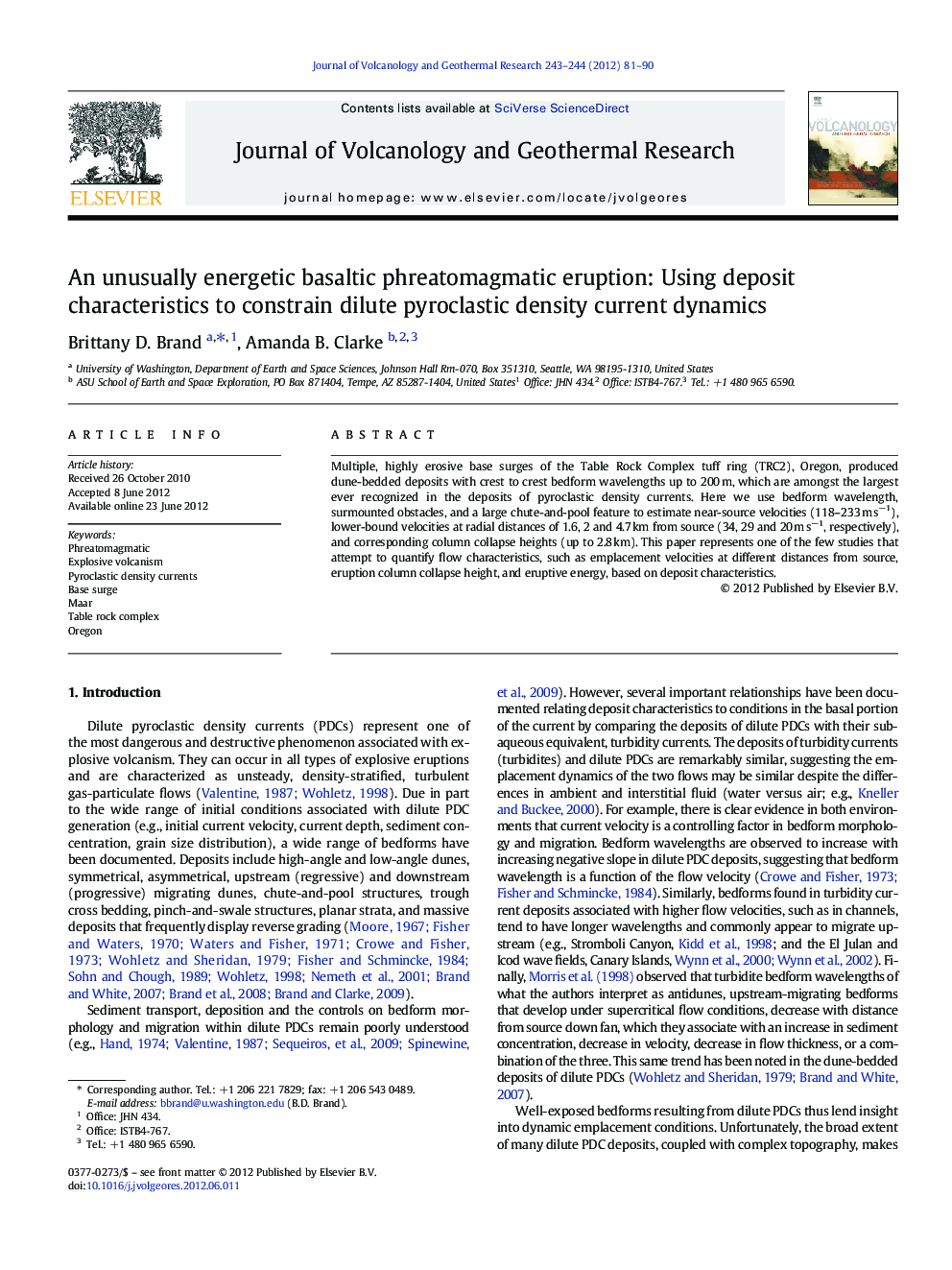| Article ID | Journal | Published Year | Pages | File Type |
|---|---|---|---|---|
| 4713295 | Journal of Volcanology and Geothermal Research | 2012 | 10 Pages |
Multiple, highly erosive base surges of the Table Rock Complex tuff ring (TRC2), Oregon, produced dune-bedded deposits with crest to crest bedform wavelengths up to 200 m, which are amongst the largest ever recognized in the deposits of pyroclastic density currents. Here we use bedform wavelength, surmounted obstacles, and a large chute-and-pool feature to estimate near-source velocities (118–233 m s− 1), lower-bound velocities at radial distances of 1.6, 2 and 4.7 km from source (34, 29 and 20 m s− 1, respectively), and corresponding column collapse heights (up to 2.8 km). This paper represents one of the few studies that attempt to quantify flow characteristics, such as emplacement velocities at different distances from source, eruption column collapse height, and eruptive energy, based on deposit characteristics.
► We present and discuss base surge deposits from an energetic phreatomagmatic eruption. ► Dune bedforms up to 200 m in wavelength are documented. ► These are amongst the largest dunes recognized in base surge deposits. ► We demonstrate how deposits can be used to quantify eruption and base surge dynamics.
